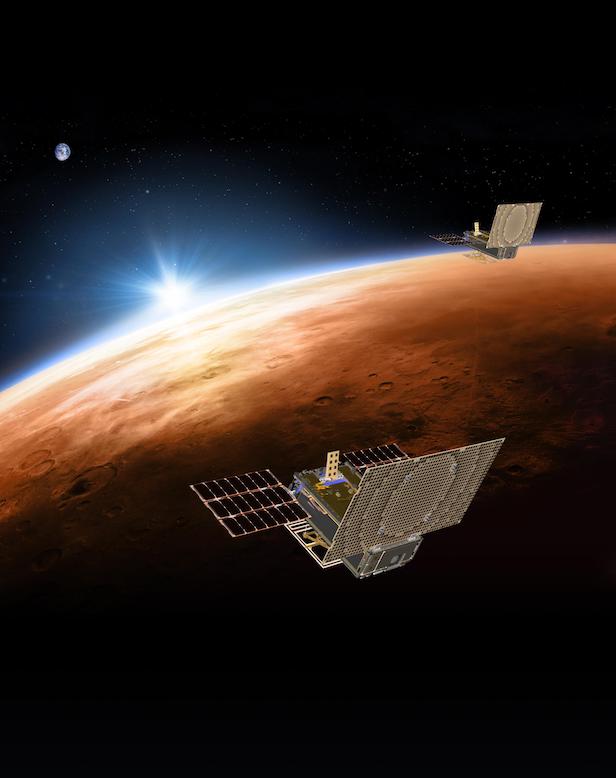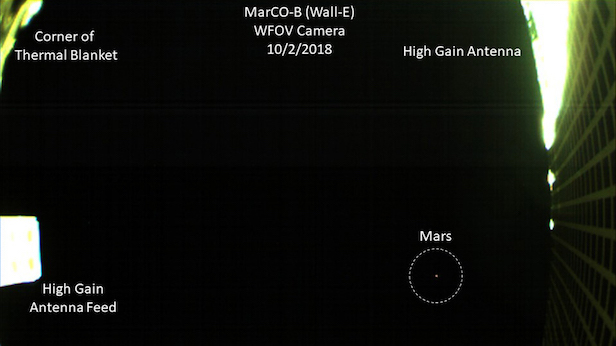The first view of Mars from NASA’s CubeSats
This tiny, low-cost spacecraft has imaged Mars for the first time ahead of its rendezvous

The MarCOs will be the first CubeSats – a kind of modular, mini-satellite – flown in deep space. They’re designed to fly along behind NASA’s InSight lander on its cruise to Mars. Image credit: NASA/JPL-Caltech
NASA’s MarCO mission was designed to find out if briefcase-sized spacecraft called CubeSats could survive the journey to deep space. Now, MarCO – which stands for Mars Cube One – has Mars in sight.
One of the twin MarCO CubeSats snapped this image of Mars on 3 October 2018 – the first image of the Red Planet ever produced by this class of tiny, low-cost spacecraft. The two CubeSats are officially called MarCO-A and MarCO-B but nicknamed “EVE” and “Wall-E” by their engineering team.
A wide-angle camera on top of MarCO-B produced the image as a test of exposure settings. The MarCO mission, led by NASA’s Jet Propulsion Laboratory in Pasadena, California, United States, hopes to produce more images as the CubeSats approach Mars ahead of 26 November 2018. That’s when they’ll demonstrate their communications capabilities while NASA’s InSight spacecraft attempts to land on the Red Planet. (The InSight mission won’t rely on them, however; NASA’s Mars orbiters will be relaying the spacecraft’s data back to Earth.)
This image was taken from a distance of roughly 12.8 million kilometres (eight million miles) from Mars. The MarCOs are “chasing” Mars, which is a moving target as it orbits the Sun. In order to be in place for InSight’s landing, the CubeSats have to travel roughly 85 million kilometres (53 million miles). They have already traveled 399 million kilometres (248 million miles).

One of NASA’s twin MarCO spacecraft took this image (annotated) of Mars on 2 October 2018 – the first time a CubeSat, a kind of low-cost, briefcase-sized spacecraft – has done so. Image Credit: NASA/JPL-Caltech
MarCO-B’s wide-angle camera looks straight out from the deck of the CubeSat. Parts related to the spacecraft’s high-gain antenna are visible on either side of the image. Mars appears as a small red dot at the right of the image.
To take the image, the MarCO team had to program the CubeSat to rotate in space so that the deck of its boxy “body” was pointing at Mars. After several test images, they were excited to see that clear, red pinprick.
“We’ve been waiting six months to get to Mars,” says Cody Colley, MarCO’s mission manager at JPL. “The cruise phase of the mission is always difficult, so you take all the small wins when they come. Finally seeing the planet is definitely a big win for the team.”
Keep up to date with the latest news in All About Space – available every month for just £4.99. Alternatively you can subscribe here for a fraction of the price!




